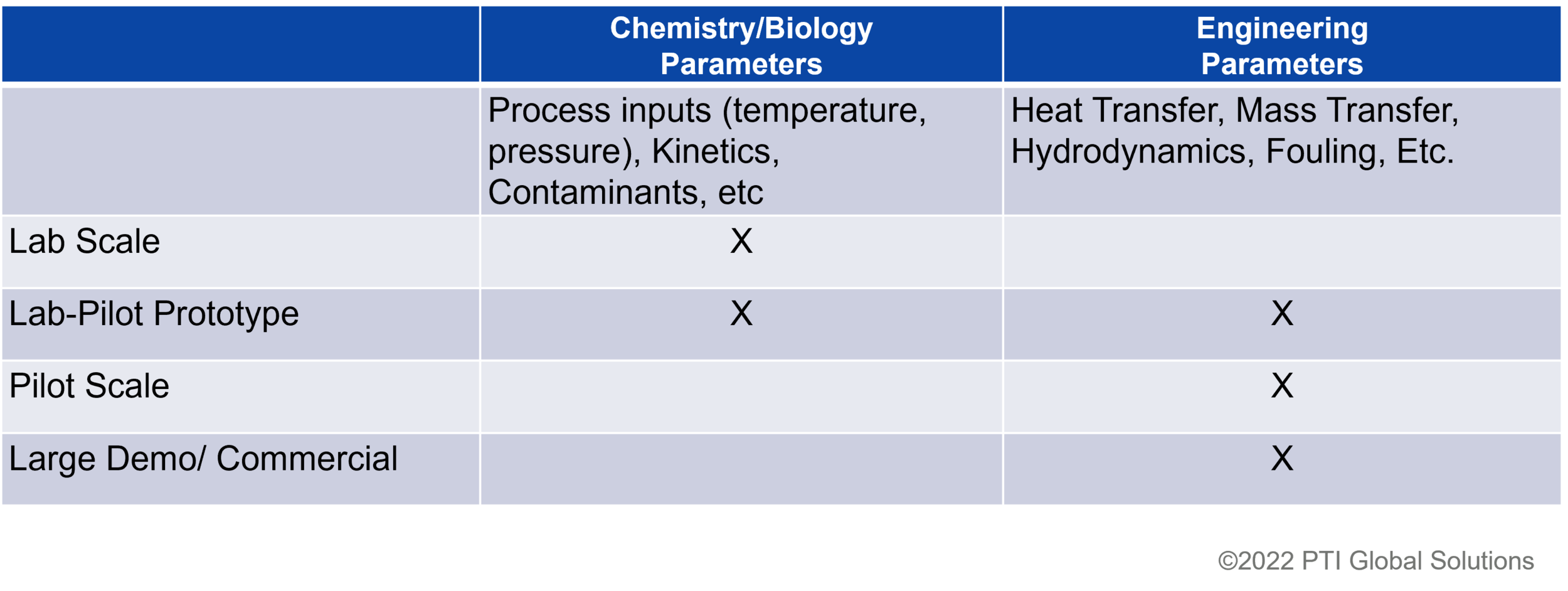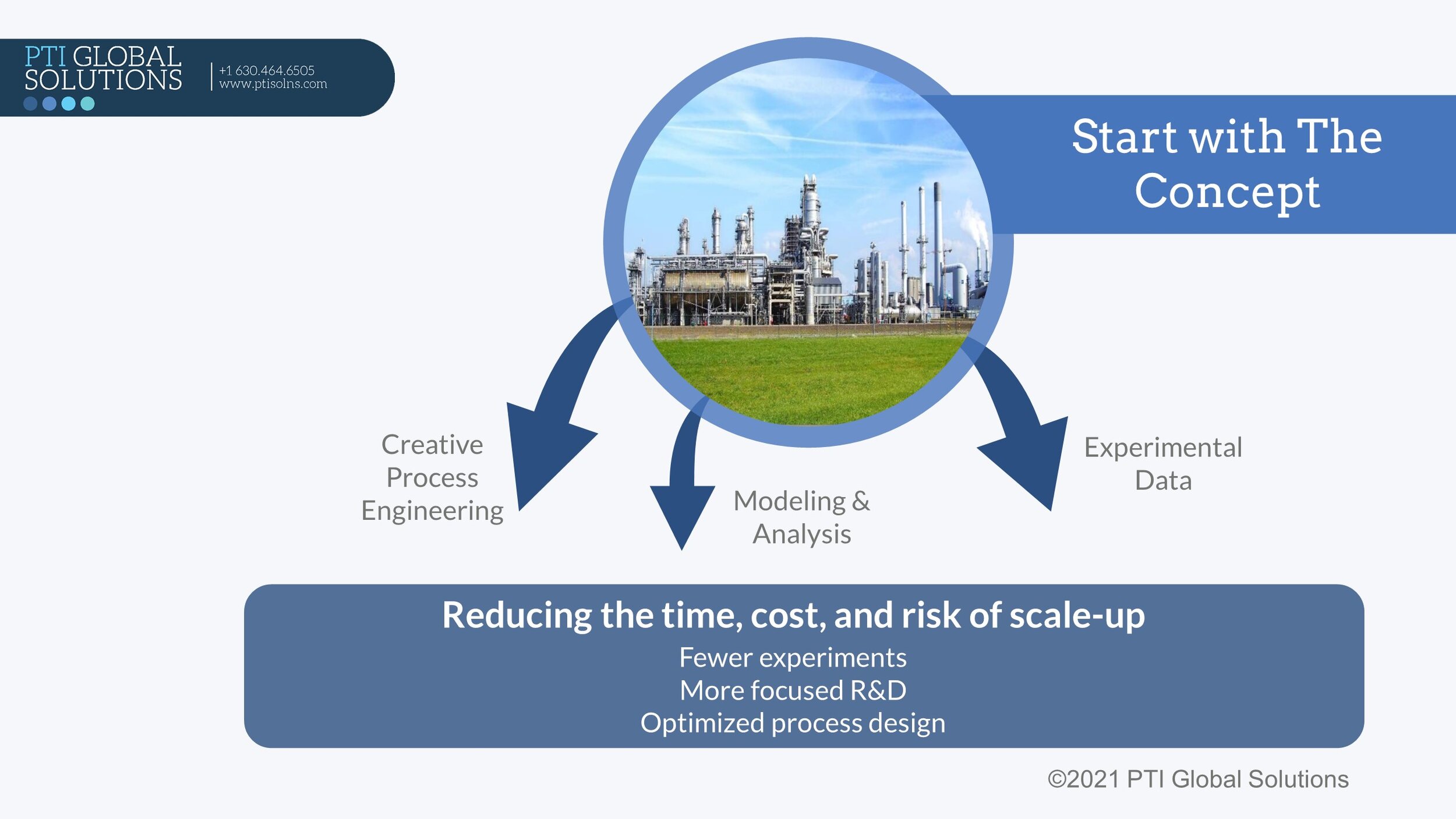“I don’t think that market forces alone will do the trick. I don’t think we have a chance to meet the aggressive climate targets, if we continue to dump a pollutant, CO2, into the atmosphere without any economic penalty as we can never compete with the status quo,” says Dr. Michael Schultz, Principal at PTI Global Solutions.
Dr. Michael Schultz enjoys the challenge of solving difficult engineering problems to reduce carbon footprint and deliver economic value. As Managing Director of PTI Global Solutions, Michael works with companies in the sustainable technology space to help accelerate commercialization, reduce risk, and get the greatest value from these great ideas.
Previously, Michael held positions at LanzaTech, Battelle Science and Technology Malaysia, and UOP, leading process R&D and scaleup across a broad range of chemical and biological technology areas. Michael holds a B.S. in Chemical Engineering from the University of Michigan and a Ph.D. in Chemical Engineering from the University of Massachusetts. He received the 2015 EPA Greener Synthetic Pathway award from the US EPA and the 2005 Haden Freeman Award for Engineering Excellence from IChemE. Mike has been granted more than 45 US Patents in his career.
Contact Dr. Michael Schultz with your professional interest in Sustainable Fuels.
Register here for “Paths to Sustainable Fuels” synergy event with Dr. Michael Schultz on 31 May.
Sebastian Klemm: What is your mission with PTI Global Solutions, and how do you achieve it?
Michael Schultz: PTI Global Solutions helps companies in the sustainable technology space reduce carbon and create value by maximizing return from their best ideas, reduce the time and cost required to commercialize, and accelerate the deployment of technology to the marketplace.
I bring my experience from more than 20 years in industry, where I have had the chance to scaleup a number of new products and process technologies, helping companies work through scale up challenges. My ultimate goal is to help these companies build this capability, rather than simply issuing reports, deliverables.
Sebastian Klemm: The form of energy in any given period determines the relationship between people and nature to the extent that its production affects human habitat.[1]
Alternative fuels however need to be explored within the water-energy-food nexus – the interrelated nature of our global resource systems – as water security, energy security and food security are inextricably linked and actions in one these areas often impact one or both of the others.[2]
Why are there no easy answers to sustainable fuels? What are the challenges?
Michael Schultz: One challenge is scale. The sheer quantities of fuel consumed every day are massive. On a global basis, we currently consume 100 million barrels of oil a day, about 4 billion gallons, or 16 billion liters.[3] It will take trillions of dollars in capital to replace the current infrastructure with infrastructure to produce sustainable fuels. To further illustrate the scale challenge, a world scale refinery such as the Reliance refinery in Jamnigar consumes 1.2 million barrels of oil a day, a scale more than 50x the largest corn ethanol plant.[4]
The second challenge is compatibility. Our transportation infrastructure is largely built around liquid fuels, with engines that have been designed for petroleum based refinery fractions. Introduction of new, sustainable fuels, such as ethanol for gasoline engines, renewable diesel, or sustainable aviation fuel (SAF), requires extensive testing to insure compatibility with existing engines. I believe that over time we will see custom engines designed for these sustainable fuels, but that will take time.
A third challenge is feedstock. As noted above we consume 100 million barrels of oil a day. Feedstocks for sustainable fuels range from waste industrial gases, used cooking oil, waste biomass, and purpose grown vegetable oils. We need similar, low cost quantities of these alternative feedstocks to meet existing transportation fuel demand with alternative, sustainable liquid fuels.
It should be noted that electric vehicles solves many of these challenges. I believe we need acceleration of both pathways—broad electrification of the transportation infrastructure and sustainable, drop-in transportation fuels to have the greatest impact on CO2 reduction.
Visit the PTI Global Solutions website
Sebastian Klemm: The fuel market has long been dominated almost exclusively by mineral oil, meaning fossil fuel extraction from the ground which when burned emits additional carbon into the atmosphere.
In Germany, the German Energy Agency dena – that acts at the interface between politics and industry – advocates the use of alternative fuels to change this situation and to reduce emissions.[5] Sustainable fuels that can substitute fossil fuel may be grouped into synthetic fuels [6] and biofuels [7].
With your expertise you enable scale-up & commercialization of low carbon energy and sustainable fuels [8]. Considering available quantities of solid municipal waste and land use required for biofuels next to space for wildlife & space for a growing global population:
What does the scalability of sythetic fuels and biofuels depend on?
Michael Schultz: We can think about scalability for three areas. 1) Feedstock collection, distribution and processing. Whether we are collecting biomass or municipal waste, industrial off-gases, or used cooking oil or vegetable oils, each brings its own logistic challenges. The feedstock then must be conditioned for use in the process. This may involve size reduction of biomass or municipal waste (grinding or shredding the feedstock to reduce the particle size), limited cleaning of industrial gases to reduce impurities, or purification of cooking/vegetable oil to remove impurities that can damage catalyst. There are systems level scalability challenges (how to get X number of trucks per day on site delivering municipal waste) and technical challenges (how to selectivity purify the feedstock to optimize cost and performance).
2) Feedstock conversion and product purification. Scaling the feedstock conversion to a hydrocarbon liquid fuel then can involve new processing units, e.g. novel gas fermentation technology to convert industrial waste gas, and modifying existing technology and going much larger in scale, e.g. adapting existing gasification technology to produce synthesis gas for synfuel production.
3) Product distribution, after all, brings its own scalability challenges. For instance, in the US ethanol is typically blended close to the final destination. As a result a robust infrastructure has developed to enable this.
Sebastian Klemm: What potentials of sustainable fuels have you been able to leverage in specific projects?
Michael Schultz: I have been fortunate to work on a number of projects to scale up and commercialize sustainable fuels.
In my role at LanzaTech we were successful in the scaleup of the production of sustainable ethanol from waste industrial gases, used as a gasoline blending component, and secured the first commercial projects for this technology. We also worked closely with Pacific Northwest National Lab to develop and scale the first technology for production of sustainable aviation fuel from ethanol.
As a consultant I have worked with clients on project development for sustainable aviation fuel, and technology evaluation for production of renewable diesel.
Sebastian Klemm: The aviation industry has become a fixture of global transport as well as global emissions. While mobility may be perceived as a social good and integral to a global economy paradigm. The pollutants that trail movement by flight – carbon dioxide, nitrogen oxides, water vapor in contrails, black carbon – are not. [9] Beyond fuel efficiency measures through propulsion technologies, aerodynamic aircraft shapes, lightweight materials – to reduce emissions:
What are tangible paths to SAF – Sustainable Aviation Fuels?
Michael Schultz: Three pathways have emerged as the most developed to date. The first is a route called HEFA (Hydroprocessed Esters and Fatty Acids), also known as HVO (hydrotreated vegetable oil). This is a fancy way of saying that oils and fats from plants and animals go through a hydroprocessing step (similar to a typical oil refinery operation) and downstream conversion to produce sustainable aviation fuel.
Alcohol to Jet (ATJ) is a promising route, in which alcohol produced from waste industrial gas or fermentation of components from corn or sugar cane is converted to sustainable aviation fuel.
A third route uses gasification of municipal solid waste or biomass to produce synthesis gas (a mixture of hydrogen and carbon monoxide), followed by an established process known as Fischer Tropsche to convert the synthesis gas to sustainable aviation fuel.
Other emerging routes, although earlier stage, include high temperature/high pressure conversion of feedstocks such as algae, fats, and oils, and electrochemical conversion of CO2 into carbon monoxide, followed by the Fischer-Tropsch process. [10]
Sebatian Klemm: Sustainable aviation fuels are a critical part to sustainably transform the transportation system to post-fossil fuel mobility. Decarbonization efforts however do not end with sustainable technologies, as even with renewable energy sources more excessive use may lead to unsustainable rebound effects. – As Matthias Schuler of Transsolar put it in regard of his work on the Masdar City project: “We told the builder from the very beginning that Masdar cannot be made into a CO2-neutral city with technology alone. The concept only works if people’s attitudes and habits change. This may mean lowering our demands.” [11]
What connections do you draw between sustainable fuels, transportation, mobility, and the principle of sufficiency?
Michael Schultz: This is a challenge. I think in many ways we are playing a dangerous game. The immediate challenges of global warming and the impact of CO2 are, in my view, widely accepted. I am not terribly concerned with climate change deniers, as I believe these to be a small (although sometimes vocal) minority.
What is more concerning is the attitude We need sustainable solutions, but they can’t cost more, or We can’t give up the lifestyles we have become accustomed to. I don’t think that market forces alone will do the trick. I don’t think we have a chance to meet the aggressive climate targets, if we continue to dump a pollutant, CO2, into the atmosphere without any economic penalty as we can never compete with the status quo.
I think of analogies in the US, where banning lead in gasoline, sulfur in industrial emissions – leading to smog and acid rain – and dumping hydrocarbons into water ways – leading to lakes and rivers catching fire on a regular basis – was only accomplished through government intervention. – Industry came up with good, technical solutions to these problems, but only when pushed to do so.
In some ways we also need to learn to live differently. In the last couple of years we have learned that we can work remotely, reducing the need to commute to the office on a daily basis, and the need for frequent air travel to meet clients or attend conferences. This will have a positive benefit going forward.
Links:
· Register here for “Paths to Sustainable Fuels” synergy event with Dr. Michael Schultz on 31 May.
· Contact Dr. Michael Schultz with your professional interest in Sustainable Fuels.
References
↑1, ↑11 archplus: “Post-Oil City – The History of the City’s Future”, English Version, p.17, ISBN 978-3-931435-18-9 https://archplus.net/de/POC-EN/ accompanying the exhibition Post-Oil City
↑2 FAO: Water–energy–food nexus
↑3 Statista: Global oil demand 2006-2026
↑4 RFA: Ethanol Biorefinery Locations Map
↑5 German Energy Agency (dena): Fuels & technologies
↑6 Synthetic_fuel – Wikipedia
↑7 Biofuel – Wikipedia
↑8 https://www.ptisolns.com/mike-schultz
↑9 Drawdown, edited by Paul Hawken, Penguin Books 2017, p.150 https://www.drawdown.org/the-book
↑10 Fischer–Tropsch process – Wikipedia




















